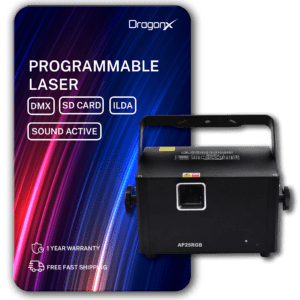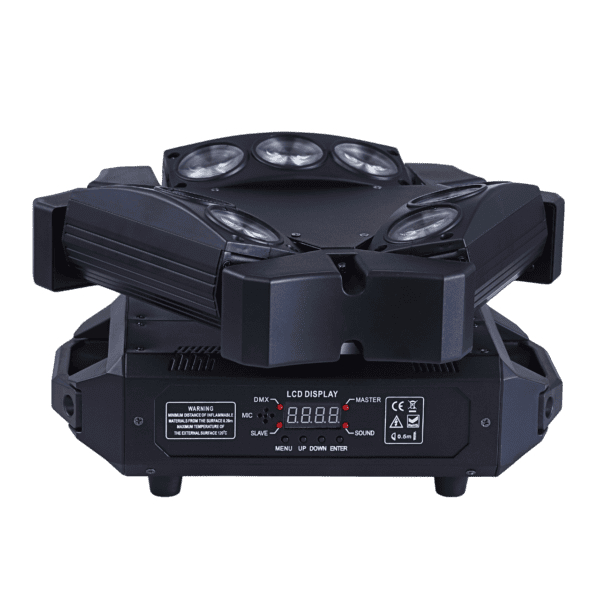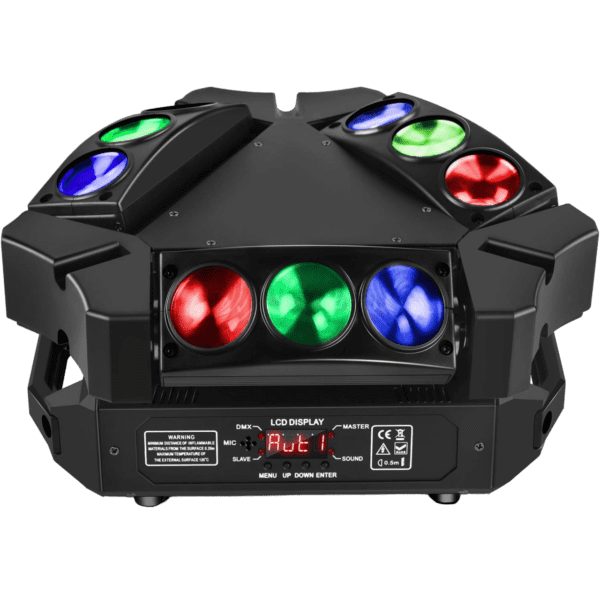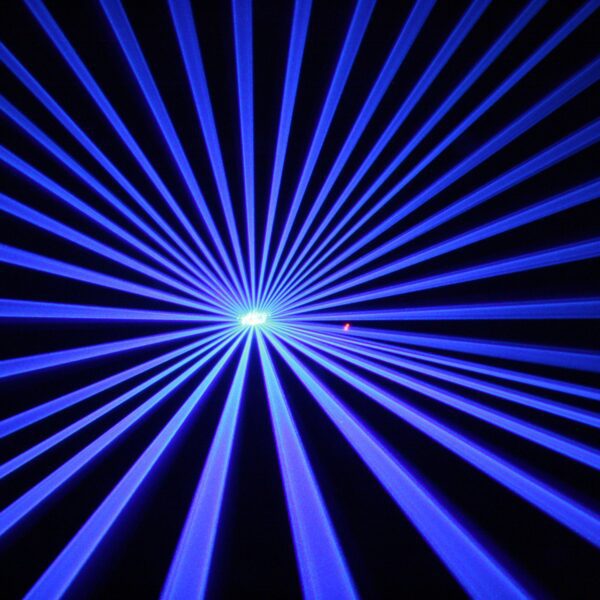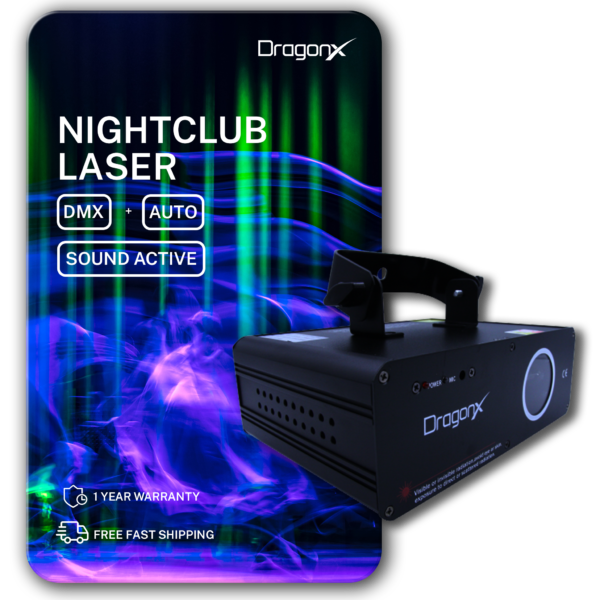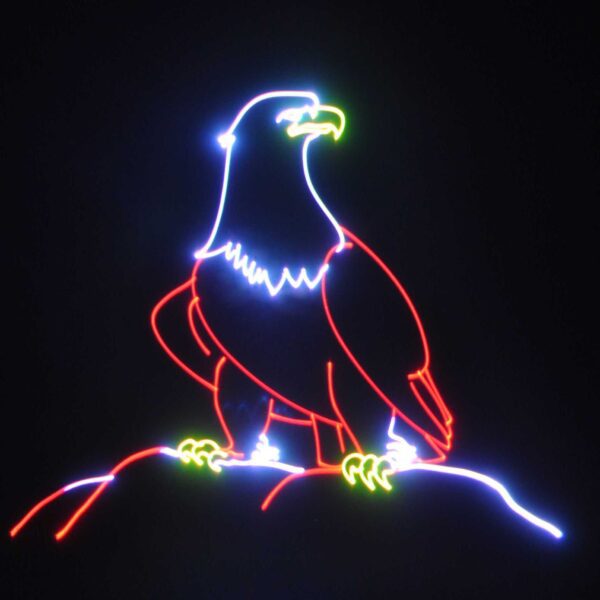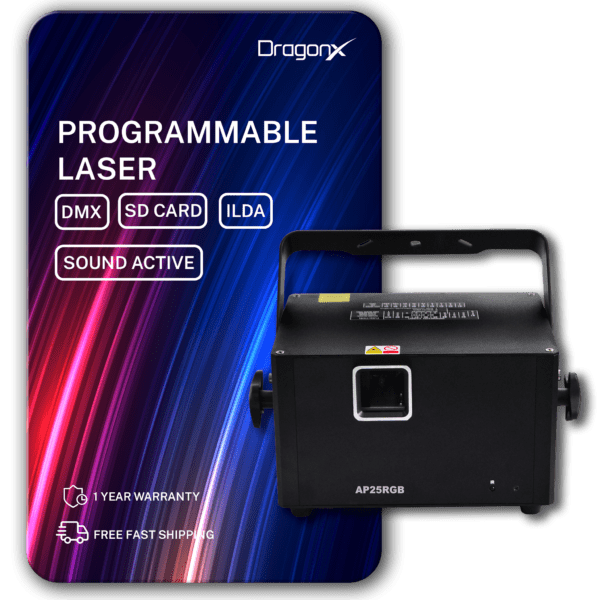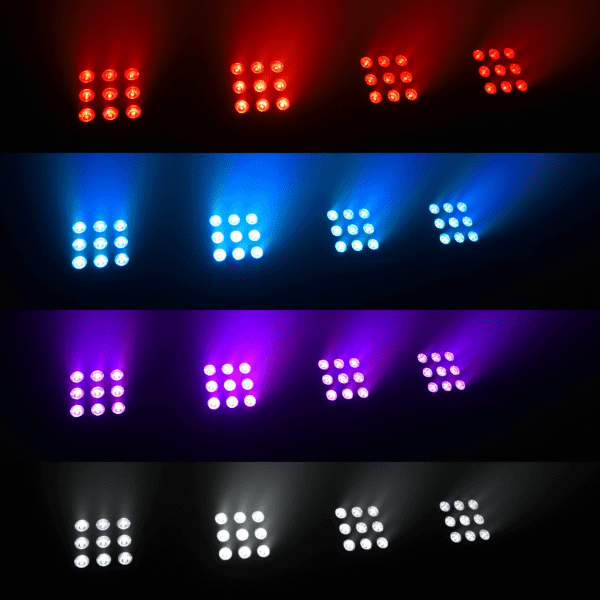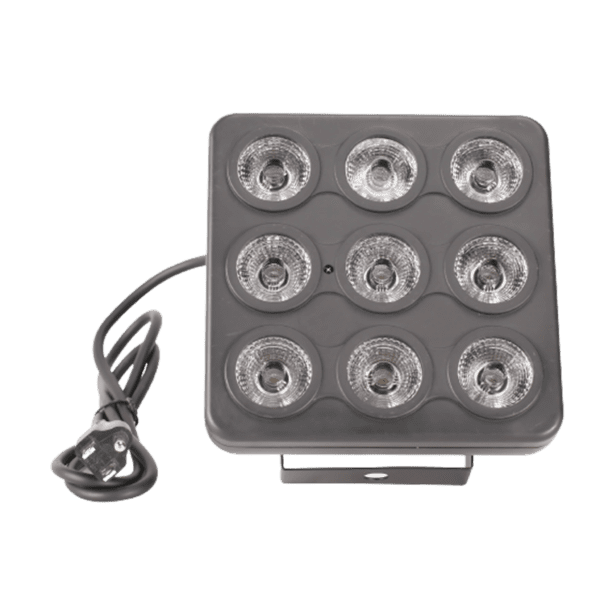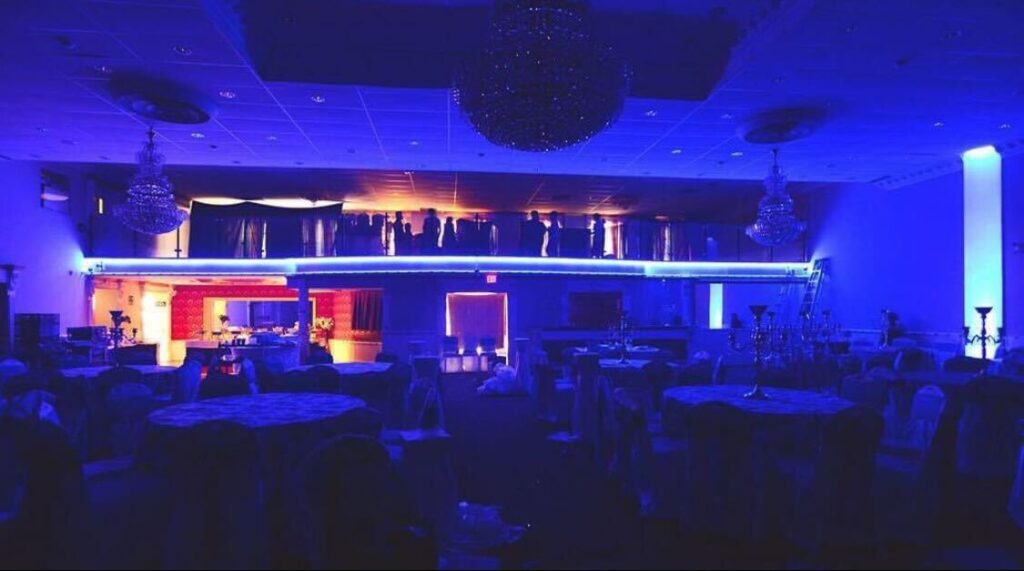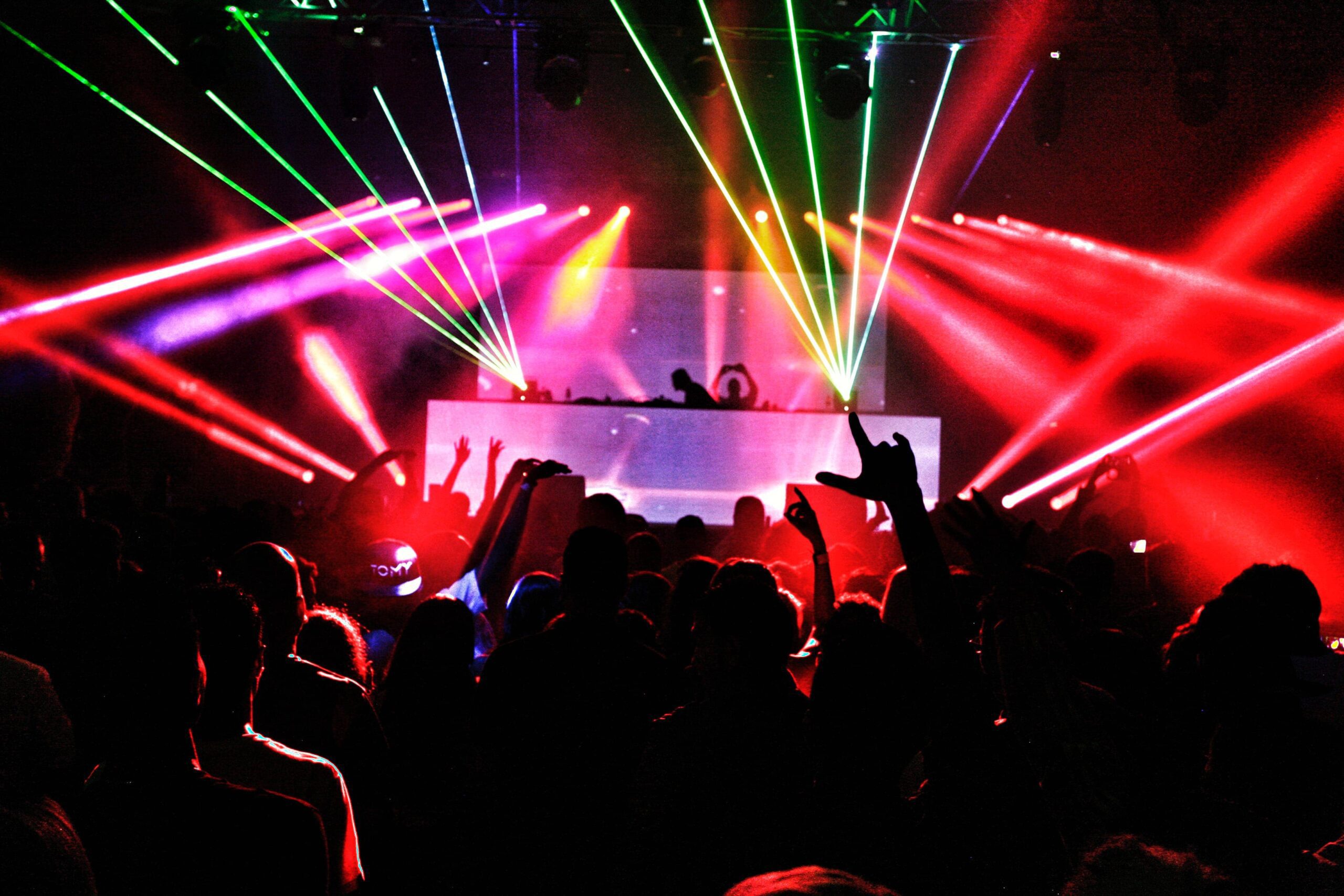Laser light shows have become a staple of modern entertainment, captivating audiences with their dazzling displays of color and movement. Behind these mesmerizing performances lies a combination of technology and creativity – laser programming. Whether you’re a party DJ, an event planner, or simply an enthusiast looking to explore this fascinating field, understanding how to program laser lights can open up a world of possibilities.
In this comprehensive guide, we’ll walk you through the basics of laser programming using ILDA standards, from understanding the fundamental concepts to creating your first light show.
What is ILDA?
First of all, what is ILDA Laser programming? ILDA, or the International Laser Display Association, is a non-profit organization founded in 1986 to promote the use of laser display technology and set industry standards. ILDA has played a crucial role in developing and maintaining technical standards for laser light shows, ensuring compatibility between different manufacturers’ equipment and software.
The term “ILDA” is often used interchangeably to refer to these standards, particularly the ILDA File Format Standard. This standard defines how laser show data is stored and transmitted, allowing for seamless integration between various laser projectors and control systems.
Understanding Laser Light Programming Basics
Before we delve into the specifics of programming, it’s essential to grasp some key concepts:
- Laser Projector: The hardware that emits the laser beams.
- Scanning System: Mirrors that direct the laser beam to create patterns.
- Control Interface: Hardware that connects your computer to the laser projector.
- Software: Programs used to create and control laser animations.
Laser effects generally fall into three categories:
- Beams: Single points of light creating aerial effects.
- Graphics: Two-dimensional shapes and patterns.
- Animations: Moving graphics and complex sequences.
Getting Started with ILDA Programming
To begin programming laser lights, you’ll need:
- A laser projector compatible with ILDA standards
- An ILDA-compatible control interface (like Pangolin FB3 or FB4)
- Laser show software (such as Pangolin’s Quickshow)
- A computer to run the software
Set up your workspace in a safe, controlled environment with enough room for laser projection. Ensure proper ventilation for your equipment and use appropriate eye protection.
Step-by-Step Guide to Programming Laser Lights
1. Creating Basic Shapes and Patterns
Start by familiarizing yourself with your chosen software’s interface. Most programs offer a library of pre-made shapes and patterns. Begin by selecting simple shapes like circles, squares, or lines.
2. Adding Color and Movement
Once you’re comfortable with basic shapes, experiment with color. ILDA-compatible systems typically support full RGB color mixing. Try adding movement to your shapes – rotation, scaling, or position changes can bring your patterns to life.
3. Timing and Synchronization
Timing is crucial in laser shows. Learn to use your software’s timeline feature to sequence different effects. Many programs allow you to import music tracks and synchronize your laser effects to the beat.
4. Creating Complex Animations
As you gain confidence, start combining multiple shapes and movements to create more complex animations. Experiment with layering effects and using different opacities.
5. Incorporating Music and Sound
Many laser show software packages include audio reactive features. These allow your laser effects to respond dynamically to music, creating a synchronized audiovisual experience.
Software Spotlight: Pangolin’s Quickshow
Pangolin’s Quickshow is a popular choice for beginners due to its user-friendly interface and powerful features. Here’s a quick overview:
- Cue List: Organize your show into easily triggerable segments.
- Timeline Editor: Create precise sequences of effects.
- Live Control: Adjust parameters in real-time during performance.
- Safety Features: Built-in tools to ensure your show complies with safety regulations.
To get started with Quickshow:
- Connect your FB3 or FB4 interface to your computer and laser projector.
- Launch Quickshow and create a new project.
- Explore the shape library and drag elements onto your workspace.
- Use the property panel to adjust colors, sizes, and movements.
- Arrange your effects on the timeline and preview your show.
Hardware Options: Pangolin FB3 and FB4
Pangolin’s FB3 and FB4 are popular ILDA-compatible control interfaces:
- FB3: A compact, versatile option suitable for most small to medium setups.
- FB4: Offers higher scan rates and more advanced features for professional use.
Both connect to your computer via USB and to your laser projector via ILDA cables. They act as the bridge between your software and the laser hardware, ensuring precise control and timing.
Exporting and Using Your Programmed Shows
Saving and Exporting Projects
Always save your work regularly. Most software allows you to export your shows in various formats, including the standard ILDA format (.ild).
Uploading to SD Cards for Standalone Operation
Many modern laser projectors support SD card playback:
- Export your show in a format compatible with your laser system.
- Copy the files to an SD card.
- Insert the SD card into your laser projector.
- Use the projector’s built-in controls to select and play your show.
Direct Control from a Laptop
For live performances or more dynamic control:
- Connect your laptop to the FB3/FB4 interface.
- Connect the interface to your laser projector.
- Use your software’s live mode to control the show in real-time.
ILDA Compatible Laser Lights
Hawk ILDA Programmable Laser Projector
The Hawk 1W programmable laser projector packs the power, captivating effects, and programmability DJs need to illuminate clubs and raves up to 1200 capacity – all at a price accessible for performers managing events on a budget.
Conclusion
Programming laser lights using ILDA standards opens up a world of creative possibilities. While it may seem daunting at first, with practice and patience, you’ll soon be creating stunning visual displays. Remember to always prioritize safety, and don’t be afraid to experiment and push the boundaries of your creativity.
As you continue your journey into laser programming, stay connected with the ILDA community, attend workshops, and keep up with the latest trends and technologies. The world of laser light shows is constantly evolving, offering endless opportunities for innovation and artistic expression.



